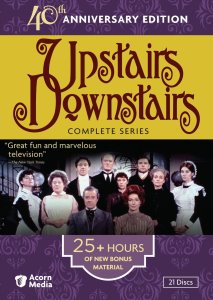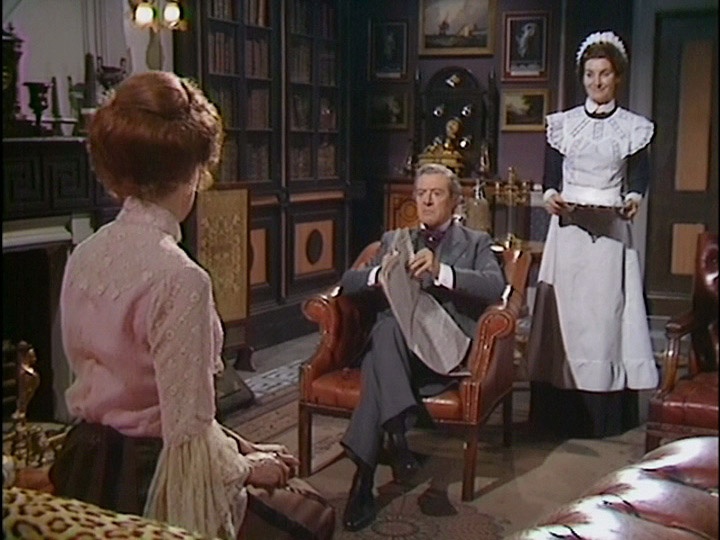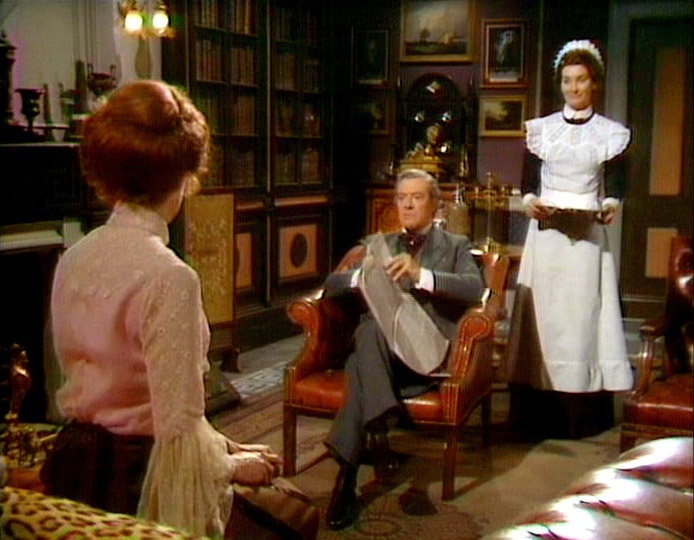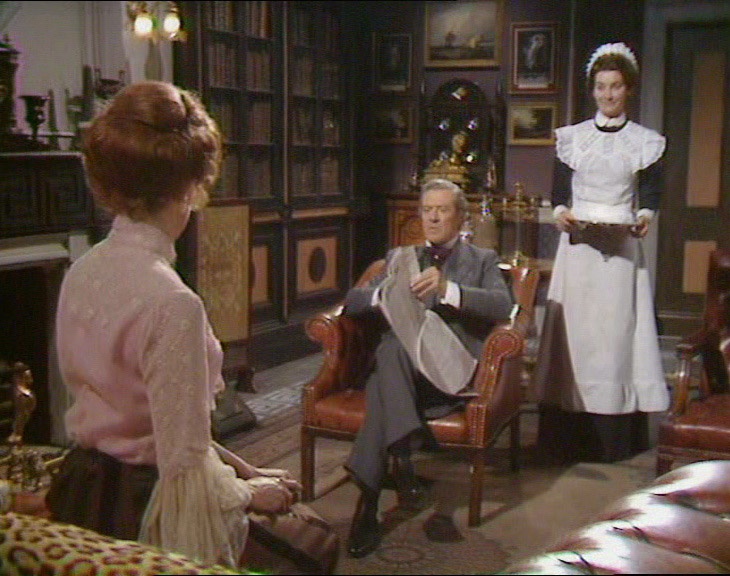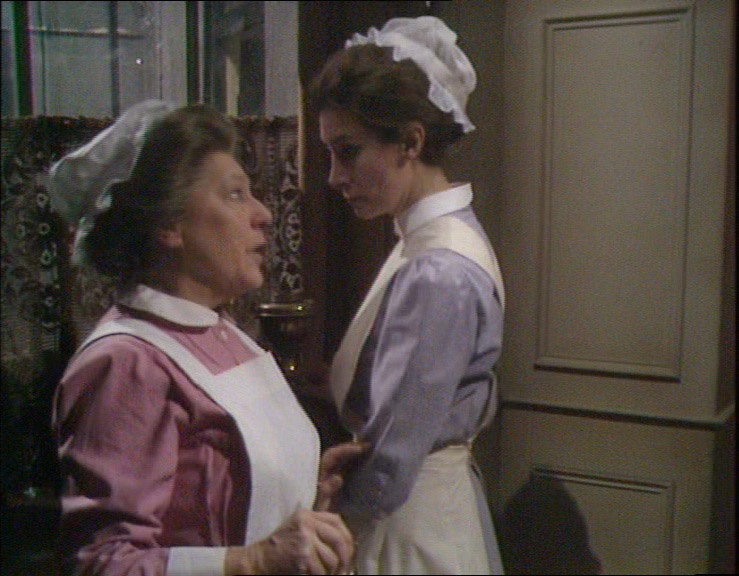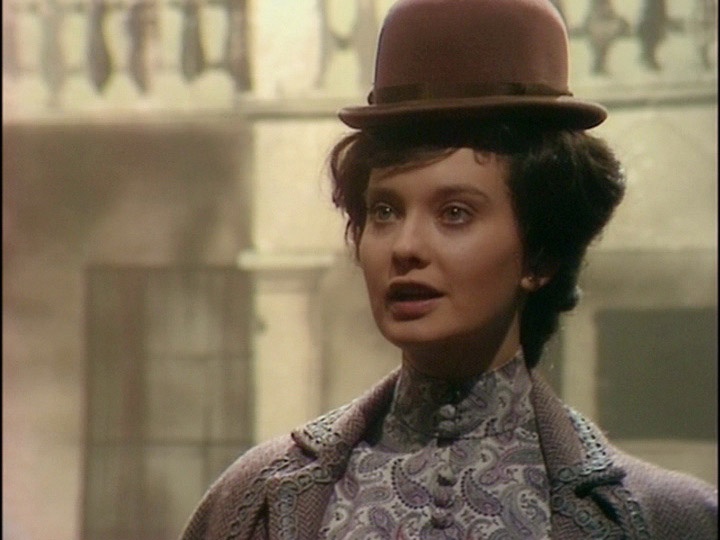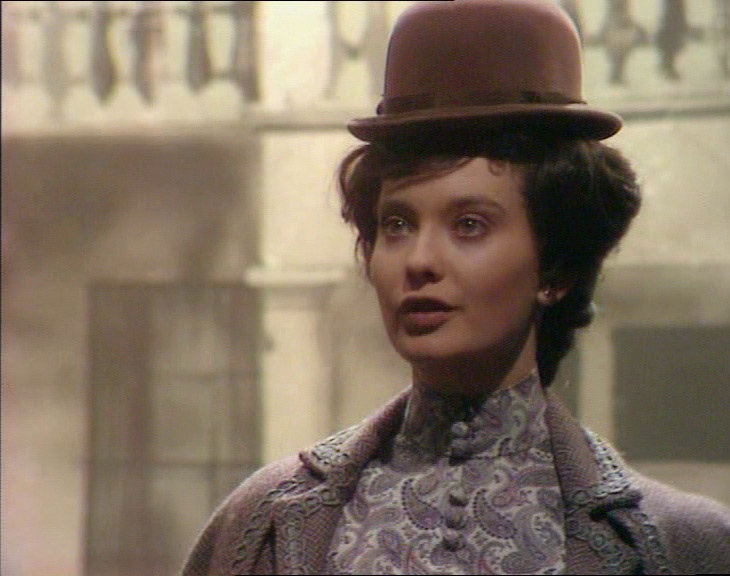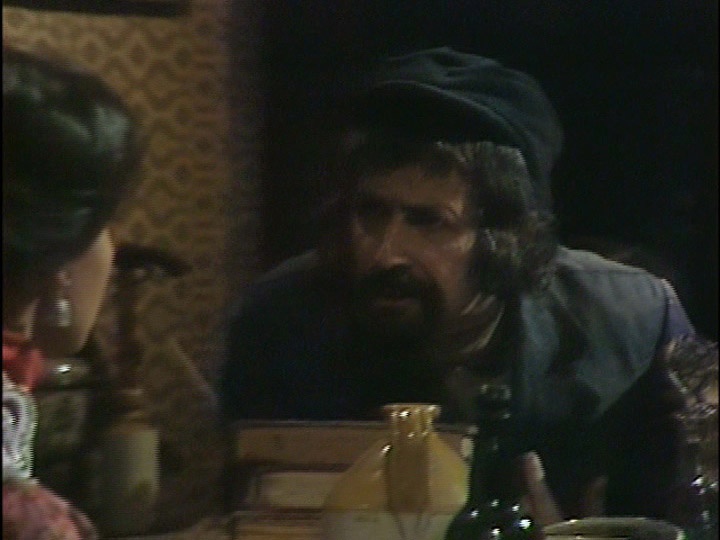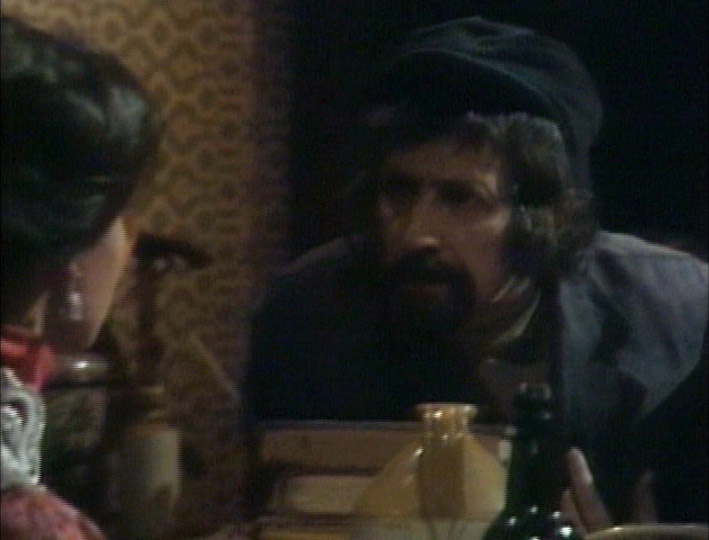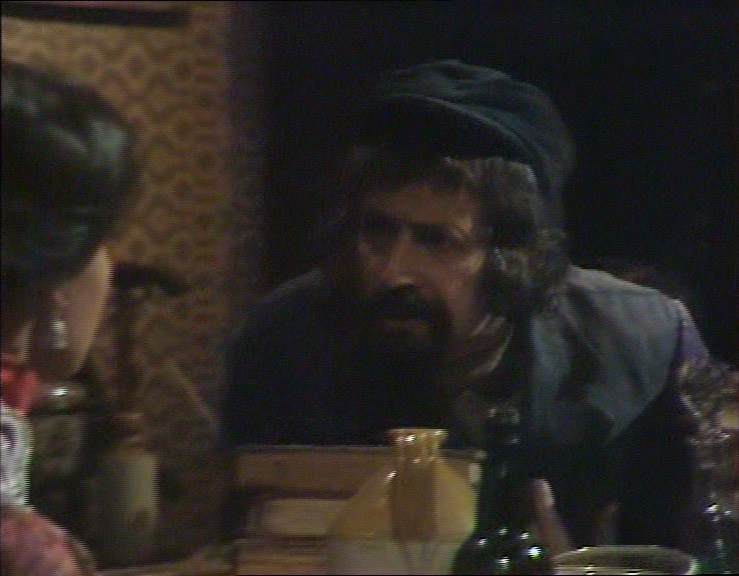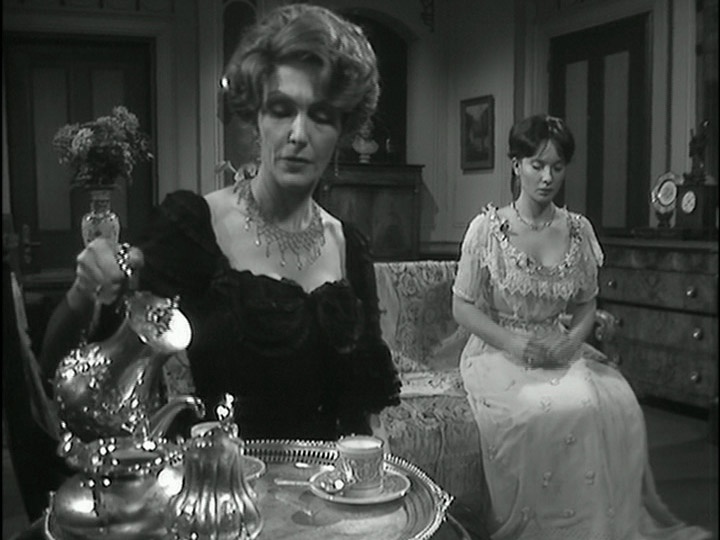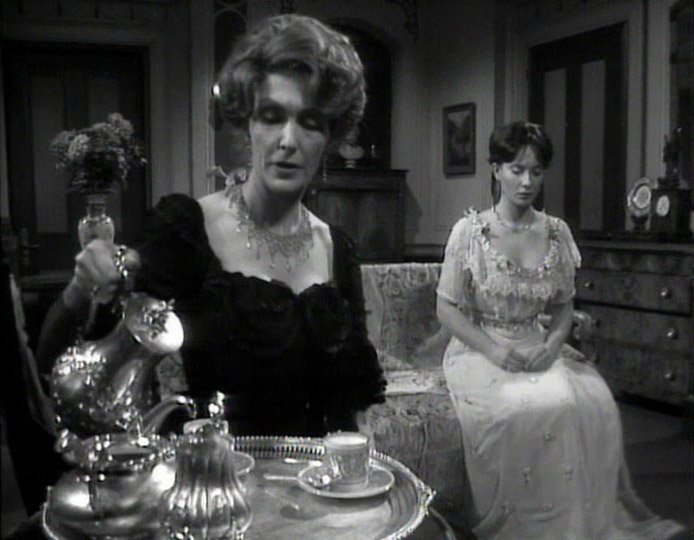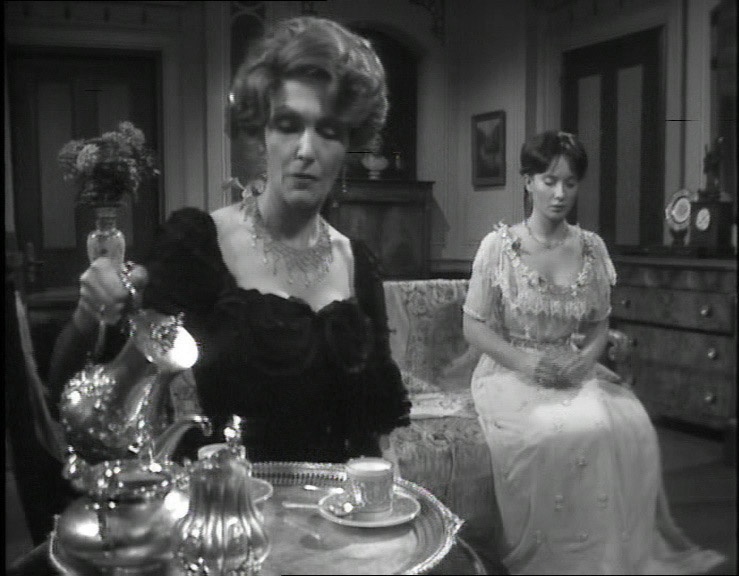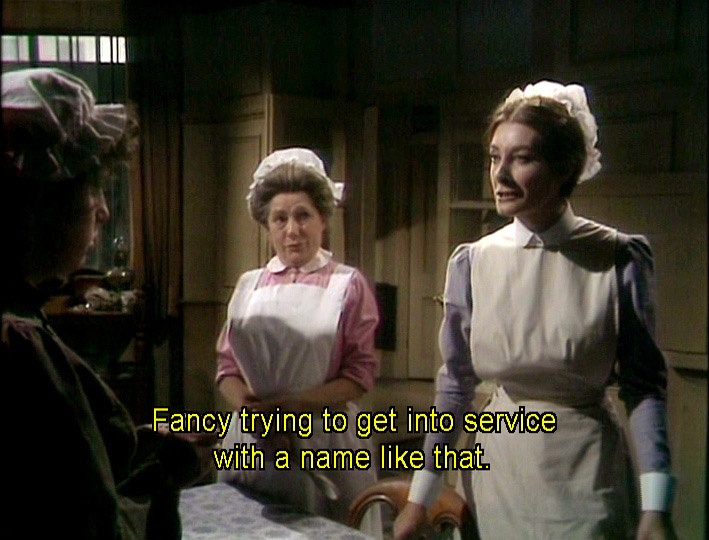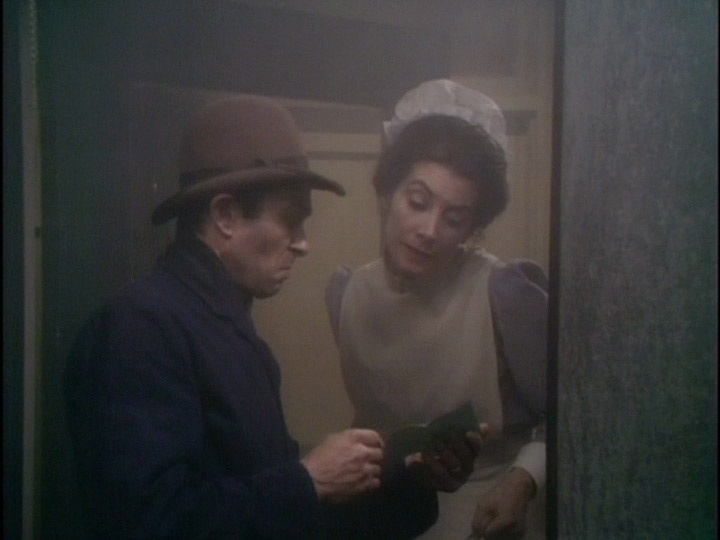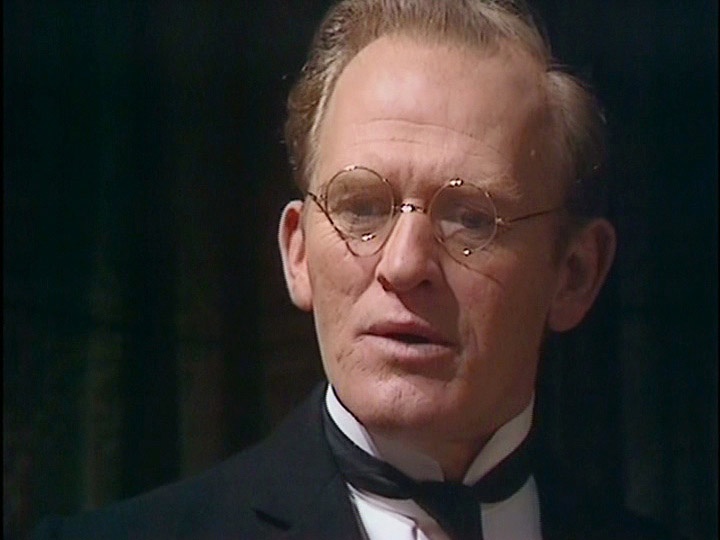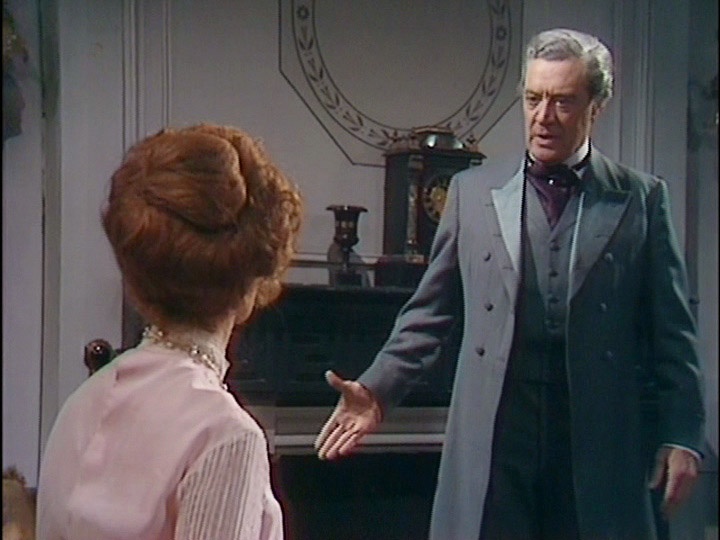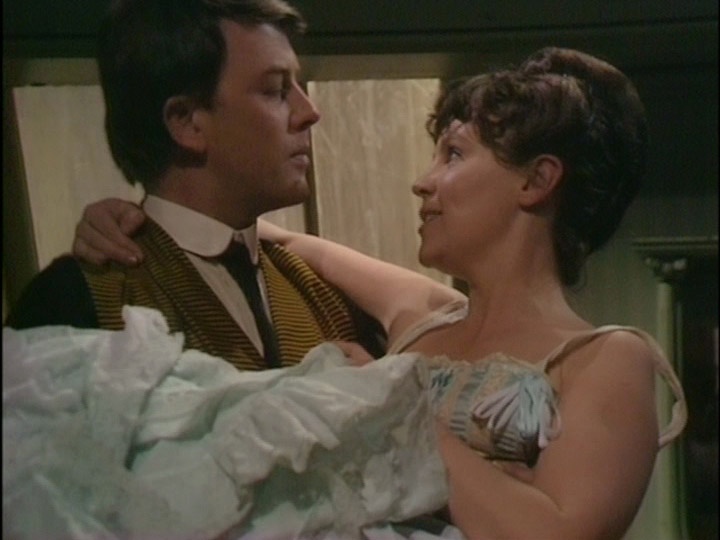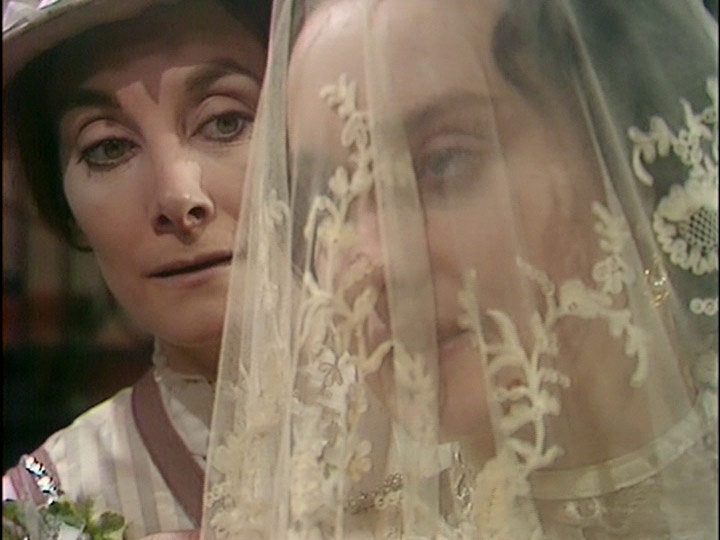![]()
![]()

![]()
![]()
|
Search DVDBeaver |
S E A R C H D V D B e a v e r |
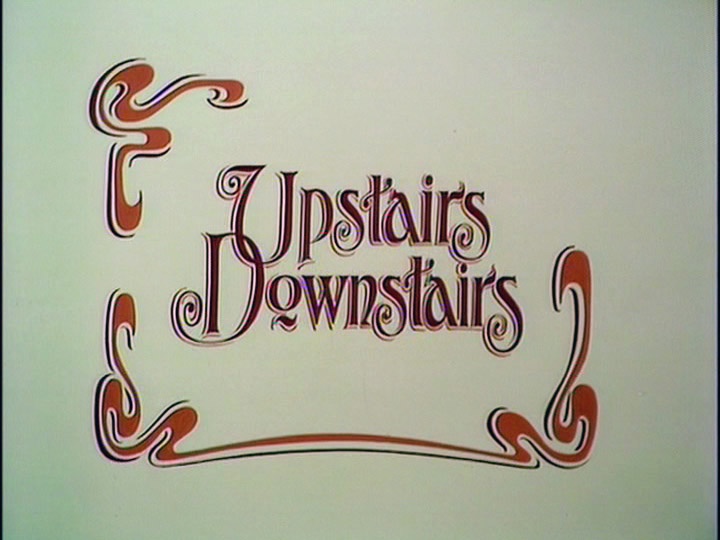
directed by Bill Bain, Christopher Hodson, Raymond Menmuir and Derek
Bennett etc.
UK 1971-75
|
You may have read somewhere that Acorn Media is re-releasing the complete five seasons of Upstairs, Downstairs that until now has been the province of North American A&E, about whose editions few good words have been spoken. You may have read that this new set is much the same as the A&E except for some bonus features, which would make it a poor excuse for quadruple dipping if true. As it happens, this is not the case. Neither is the new Acorn edition a straightforward conversion of the present Region 2 U.K. Network remastering (2008). While I can’t speak with any authority for the 2002 A&E “Megaset”, I believe that A&E did remaster the series somewhere along the way, for my copy, purchased lord knows how many years ago and well before the Megaset, does not suffer especially from all manner of color, contrast and conversion anomalies that had been the subject of various Internet blogs and Amazon User complaints. It is this “remastered” version that I am using for these comparisons. In addition to bonus features that appear on one edition but not on another, the three editions also differ in respect to both image and sound. Acorn considered the best source elements available, apparently direct from ITV, and offers its own take on each of the episodes. Product Description: The most popular and successful British drama series in television history, Upstairs Downstairs Complete Series: 40th Anniversary Edition arrives on DVD from Acorn Media on March 29, 2011, featuring more than 25 hours of extra features (new to North American DVD editions) and “collectible packaging.” Winner of seven Emmy® Awards, two BAFTAs, a Golden Globe, and a Peabody, “Upstairs, Downstairs” tells the epic saga of life in Edwardian England. The series inspired the recent hit “Downton Abbey” and the BBC & PBS Masterpiece Classic revival of the same name that resumes the story of 165 Eaton Place where the original series left off (the first season of which is already available on DVD HERE The beloved ITV drama series captivated viewers for five heart-tugging seasons from 1971 to 1975 and has been seen by a billion people in 40 countries worldwide. Upstairs Downstairs: The Complete Series contains 68 episodes on 20 DVDs, plus one DVD with more Bonus Features than you can shake a remote at. The first season comprises 13 episodes, six of which are in black-and-white that were omitted from the first season of the original U.S. broadcast. Since the opening episode “On Trial” is introductory it was later reshot in color for North American television audiences that trailed the U.K by two years or so. In it we are introduced to the major characters, upstairs and down, and especially the streetwise Sarah (Pauline Collins), the new girl who keeps her eyes open for opportunity, and through whose eyes we come to learn about the operations and melodramas of the household. The second season's thirteen episodes flesh out the characters and relationships from the previous season. The third season's thirteen episodes (1912-1914) follow the household through the prewar years and the unexpected death of an important upstairs character. The dramatic backdrop of the Great War, largely seen through home front activities, give the fourth season its reputation as the best of the five. The sixteen episodes of the fifth and final season cover the swinging '20s to the stock market crash (1919-30). Incidentally, my preferred spelling of the title, contrary to common practice, is to omit the comma. There isn’t one on the title card or in posters or video case art, so I don’t include one. The Series: 9 The action centers around 165 Eaton Place in central London in the area known as “Belgravia” in what was then and remains one of the most fashionable and wealthiest residential neighborhoods in the world. The residence houses the Bellamy family: Richard, who married into old money, and Lady Marjorie, mistress of the house; their children: Elizabeth and James; and the servants who see to their needs: Hudson, the butler and the rock that holds both “families” together; Mrs Bridges, the cook; Rose, the head house parlourmaid; Ruby, the kitchen maid (starting with the second season); Alfred the footman (replaced later in the first season by Edward); Thomas, the chauffeur (starting with second season); Sarah, the under house parlourmaid; and the neither Up, nor quite Down, Miss Maud Roberts (just ask her!), lady’s maid to Lady Marjorie. Midway through the five seasons a significant member of the Bellamy household is lost and is gradually replaced by one Miss Forrest, initially hired as Richard’s secretary. The series span the years 1903-1930, with the first and second seasons (or “series” as they are called in England, and as they are so titled on the Acorn cases) between 1903-10. At the outset we are introduced to Sarah who joins the staff downstairs as the new under house parlourmaid. Sarah, with surprising chutzpah, tries to pass herself as descended from French nobility, but is in fact illiterate with little history to recommend her. All the same she is taken in by the Bellamy household and becomes, for the first and a later season, a catalyst for adventure and unexpected change. Upstairs, the house is commanded, if not exactly ruled, by the conservative and Lady Marjorie Bellamy. The always distressed Richard may be the titular head of household but he is not quite conservative enough to suit Lady Marjorie. Good, well-meaning people often can’t help but raise children who feel it is their mission in life to oppose their parents, even if for otherwise just causes; and Elizabeth, 16, and older brother James, are no exception. In the first season, Elizabeth soon becomes a socialist and involved in the women’s suffrage movement. Never at rest, her eye and heart always focused toward some adventure or other that inevitably will try her parents’ good will. James is something of a libertine, whose dalliance with Sarah results in his being sent off to India by his parents to lick his wounds and, hopefully, develop a mature perspective. Ha! The very proper Lady Marjorie, much to her surprise and, I daresay, ours, finds herself in love with a younger man one summer and barely manages to escape scandal by virtue of the interventions of two of the downstairs staff. Richard slowly and with some initial reluctance, works his way up the conservative ladder, starting with a successful bid to stand for a seat in Parliament. Downstairs, matters are, in their own way, equally volatile: Sarah pushes the envelope of propriety with every breath she takes but somehow manages to ingratiate herself with Rose. At one point she is the natural suspect when valuable items go missing. The footman of a neighboring household is the object of great fancy for one of the Bellamy kitchenmaids - doomed from the start it is a situation that is deemed improper by almost all concerned. Mrs. Bridges, the cook, becomes embroiled in what appears to be a theft of an infant. The first season ends with a defiant Elizabeth marrying a poet of questionable standing and who is, quite possibly, bi-sexual. Upstairs, Downstairs has the feeling of a filmed play. The budgets are small, the sets are minimal - even on occasion in the first season, flimsy. Each episode has three acts with lengthy bits of dialogue. While there are plenty of close-ups - this is television after all - the camera work brings no attention to itself - there’s only enough movement to recompose the frame as the actors move about the set. The actors project to an unseen audience by way of an intelligent script. They are earnest and believe in what they are saying and wholly inhabit the characters they are assigned. We soon learn that demands are expected from us, the audience. Indeed, the story cannot unfold without our complicity. The actors and their words invite us in, but we must take the necessary step towards them. We must feel, despite the difference in time, place and manner, an identity with the dynamics of the play. We soon realize that the circumstances the characters find themselves in, many of whom are born and bred to the task, will be slow to unfold. And as they unfold, we come to see that there are currents, subtle and passionate, which work their way to the surface, potential catalysts for dramatic conflict and the occasional comedy. Do we find our present lives, different as they are from this strange world of rules and manners, reflected in some way? Are there lessons or is the whole thing merely a divertissement by dint of clever writing and committed performance? Excepting a few early episodes in which David Langton as Richard and Simon Williams as the elder son James seem a little underrehearsed, the cast down to the least significant character and right to the end of the 68th episode seem perfectly moulded to their respective characters. When new characters are introduced, upstairs or down, for a single episode or for the duration, they come with their own unique backstories and agenda. They are believable and enter the story without our having that reservation that so often accompanies new characters where we feel they are there only to give the actors something to do and provide all concerned a paycheck. To single out any one actor might seem a disservice to the others, for all are so valuable and perfectly suited. I’m sure everyone has their favorites, the sparkling Nicola Pagett as the free-thinking Elizabeth; Jean Marsh as the vulnerable Rose; the serenely lovely Rachel Gurney as the correct and controlling Lady Marjorie; Meg Wynn Owen as Hazel, sailing in uncharted waters; Jacqueline Tong as the relentlessly undervalued Daisy; Angela Baddeley as the relentlessly put-upon cook Mrs Bridges; or the uncommonly beautiful Lesley-Anne Down as Georgina. Perhaps characters that didn’t stay long but made a lasting impression, such as John Alderton as Thomas or George Innes as Alfred (whose voices I find especially mesmerizing); and not to neglect the unneglectable Pauline Collins as Sarah - just to name a few who immediately come to mind. All the same, we must give a special nod to Gordon Jackson as Hudson, the steadfast butler who makes life at 165 Eaton Place possible as well as bearable. Over nearly thirty years, the actor had already amassed over 100 film and television credits before landing the role for which he would always be remembered and most identified. |
TV Premiere: October 10th, 1971
DVD Review:
Acorn Media - Region 0 - NTSC
| DVD Box Covers |
|
| Distribution |
Acorn Media Region 0 - NTSC |
| Runtime |
Total Runtime: 68 episodes (approx 57 hours) Average Episode Runtime: (50 min.) |
| Video |
Aspect ratio: 1.33:1 Resolution: 480i Codec: MPEG-2 Region 1 Average Bit Rate: 5.25 Mbps |
| Audio | Dolby Digital 2.0 Mono (English) |
| Subtitles | English (SDH), None |
| Features |
Production: Television: ITV/London Weekend Television Video: Acorn Media
Extras: • 5-part documentary: The Making of Upstairs Downstairs • 24 episode commentaries • Upstairs, Downstairs Remembered - with Gareth Hunt (51:50) • Russell Harty Goes Upstairs Downstairs (30:00) • Sandy’s Last Stand with composer Alexander Faris (13:15) • Simon Williams and Alfred Shaughnessy in Conversation (22:50) • “Russell Harty Plus” Interview with Gordon Jackson (6:40) • “Russell Harty Plus” Interview with Jean Marsh (11:15) • “Russell Harty Plus” Interview with Angela Baddeley (9:40) • Alternate version of Episode 1 “On Trial” • Essay by star and co-creator Jean Marsh
Presentation: 21 discs in 5 clamshell DVD cases in thin slipcase: 4 DVDs per season, plus one bonus disc included in Season 5 Street date: March 29th, 2011
Also published as: • Seasons One HERE & Two HERE: Street Date: March 29th, 2011
• Season Three: May 31st, 2011 HERE
• Season Four: Street date: later in 2011 • Season Five: Street date: later in 2011 |
| Comments |
Image: 4~7 - I gather from various Internet sources that the original A&E suffered from a great many major and minor problems in respect to image, some as a result of conversion to NTSC, none of which are of serious concern on the new Acorn. Gone are fluctuating color casts (most often green) and contrast (from overly bright to overly dark), murky picture quality, banding and color noise. My A&E copy, while not nearly as gruesome as the original, still suffers by comparison in every way to both the Network and the Acorn. The 2005 U.K. Network remaster is satisfactory in respect to color and contrast, but, oddly enough, is not as sharp as the new Acorn. From time to time, there remains considerable variation in image quality from episode to episode, though it improves with the passing seasons. The differences between editions are significant and easy to see. As to story content, I have not performed a detailed scene for scene comparison, but from what I can tell A&E’s occasional minor cuts have been restored. Comparing the three editions at hand in any detail is, in its way, rather frustrating, for while there are image differences from one studio to the other, those differences are only vaguely consistent, starting with title cards for most every episode in varying hues of green. There is hardly room here for a comprehensive comparison of every episode, so I shall begin with a few generalizations before settling down to a look at a few episodes from the first season. The A&E, whether early on or much latter, is handily trounced by both the Network and the Acorn. The Network is at times a taller image than either of the American editions, not the result of stretching, but less cropped. The Acorn often has a bit more saturated color, though it remains, as does the Network, relatively pastel. The Acorn is almost always sharper, subtly more coherent and less noisy. Fringing tends to exists similarly in both the Acorn and the Network. Unlike the Network, however, Acorn is not beyond adding a touch of edge enhancement. So, let’s look more closely at a few episodes in the first season: [001] - As an example of the worst case, my A&E’s rendering of “Why is Her Door Locked?” is seriously oversaturated with misjudged contrast boosting. The Network appears positively pastel by comparison, while the new Acorn is more like the Network, a little sharper - surprising as that may seem – with a skosh more color. Such oversaturated, contrast boosting as on this A&E episode is hardly the rule for A&E in other episodes, and never makes itself felt on the Network or the new Acorn. Differences in respect to color and contrast are never so great as in this episode, but other differences apply. [002] - Consider these frames from “The Key of the Door”: The A&E is closely cropped on all sides, and is softer to the point of downright blurriness. The Network, which in this case offers a little more color, also yields more image top and bottom compared to the Acorn, but the difference isn’t of much consequence. It is remarkable, however, that the Acorn, which has less resolution than the Network (540 vs 576 vertical pixels) is also sharper (I keep saying this, I know), which becomes even more apparent when the image is projected on a sizable screen. [003] - On the other hand, a comparison of caps from “The Swedish Tiger” shows that the Network and Acorn tend to agree on color, while the A&E is not cropped. (Go figure!) In the closeup we see how much smoother and less noisy is the Acorn, yet still sharper, laying to rest concerns that the image might be oversharpened or edge enhanced to any evil degree (though none would have been preferred) on the one hand or injudiciously noise-reduced on the other. Where either is actually manipulated, it speaks well of Acorn that the result does not appreciably take away from our enjoyment and appreciation of the drama. [004] - In these dark scenes from “The Key of the Door” the Acorn is the clear winner in terms of noise reduction, especially in comparison to the original A&E. Such differences may seem subtle in screen capture comparisons, but for a show that is at times barely hanging on in respect to image coherency, they add up to a considerable improvement in our viewing pleasure and absence of fatigue. [005] - The six black and white episodes - so filmed because of a strike and not presented on the original U.S. TV broadcast, but included on all the sets considered here – are more consistent in their differences. The A&E exhibits a level of black – perhaps I should say black crush – that would be more suitable for a motion picture noir than an Edwardian household television drama. The Network and Acorns are both satisfactory, but the Acorn has a subtle green cast across the several episodes. Even though the original intention for Upstairs Downstairs was for color television presentation, the black & white episodes are more consistently clearer, sharper and denser. While there are clear benefits to color for this series, they do generally suffer from overlighting, some noise in the shadowy scenes and inconsistent, occasionally thinnish, contrast. On the other hand the black and white episodes are entirely satisfying on their own terms, more so, I think – so don’t be put off by the fact that they were filmed under duress. The photographer knew what he was about, and it shows. Audio & Music: 6/7 - I should point out at the outset one of the most interesting things about how these editions are similar: They all run at the same speed. The Region 2 U.K. Network is indeed PAL, but the voices sound right (not just because they are as I am used to), without that nasal thinness that comes with PAL speedup, and is identical in timbre to the Region 1 NTSC editions. The Network episodes are roughly the same length, after accounting for their different lead-ins and internal breaks – which, thankfully, do not interrupt the flow of things on either the A&E or the Acorn. A fade to black with a little music is quite sufficient to designate the end of each episode’s first two acts, but a break for the logo is a bit too obtrusive for me. If you require them, there’s always the Network edition. As for the sound quality, limited by and large to dialogue, movement about the Bellamy household and various subtle effects outside (passing carriages and the mummery of passers by and the like), there is considerably more similarity between the editions than with image. Even so, the Acorn suffers less from a certain rough, reediness of sound. In fact, it’s downright pleasant and, in its way, robust while not inflated, yet still quite clear. My biggest concern as I anticipated my copy of the Acorn was whether or not they corrected the audio transfer defects from the early episodes of Season Three that so marred the A&E: a constant whirring noise, like the sound of film going through a movie projector that was present throughout the entire of “Miss Forrest” and a low frequency hum on “A House Divided”. They did, and we are forever grateful. Finally, Alexander Faris should take a bow for his catchy title music. The episodes themselves are less than minimally scored so that little tune tends to stick more than it might. We find it used to amusing effect as a bawdy vaudeville number for Sarah at the end of Season One’s “For Love of Love.” Extras: 8 - Acorn’s new edition of Upstairs, Downstairs leads the field in bonus features. Yet their claims of “25 hours of never-before-seen extras” overstates the case since they include in that number about 20 hours worth of audio commentaries – new to North American DVD, true, but not to the U.K. Upstairs Downstairs may be one of the seminal television series of all time, but what would we do with 25 hours of watchable bonus features! Perhaps I mince words (as is my wont) but I admit I have trouble thinking of an audio commentary as something we “see” even if we listen to it while watching the show a second time. OK, I’ll let it go, but not until I give Acorn a hats-off ovation for subtitling the entire series, sorely lacking in any previous edition from either side of the pond. On the other hand, the one thing that continues to be missing are Alastair Cooke’s marvelous introductions he made for Masterpiece Theatre that set each episode in time and place. Come to think of it, I’ve never seen any of his Masterpiece Theatre intros on DVD. The single bonus feature present on the later A&E edition, carried over onto the new Acorn set but not present on the Network edition, is Richard Marson’s 1996 “Upstairs Downstairs Remembered” hosted by Gareth Hunt (Frederick, the footman, from Season Five.) Acorn then folds in pretty much the same features we find on the Network, most importantly a 4˝-hour documentary titled “The Story of Upstairs Downstairs.” (We are thankful it is not “The Making of Upstairs Downstairs”) It is a coherent, informative, often entertaining piece, that ably and thoroughly - how shall I say it – documents everything you could possibly want to know about the show from inception to airing. It’s presented in clips of interviews featuring series developer, Alfred Shaughnessy (recorded much earlier, thus the variance in image quality), co-creator and star, Jean Marsh, and a number of actors writers and directors still among us in the middle of the last decade. Very much worth our time, “The Story of Upstairs Downstairs” is shown in five parts, cleverly spread out across the seasons. Also on hand, as separate extra features on the Seasons 3 and 4 sets, is Russell Harty (the British TV equivalent of Dick Cavett) whose television interviews with Gordon Jackson, Angela Baddeley and Jean Marsh lighten the mood and delight the senses. The twenty-four episode commentaries are a varied bouquet of reminiscences, stories and production tidbits, asides and conversations from and between the actors, directors, writers and creators of the series living at the time these were recorded (ca. 2005). Each commentary has its own complement of panelists that would have had something to do with the episode at hand. Even so, many could be easily attended to without benefit of the program, making for agreeable commentaries in their own right. The “Story of Upstairs Downstairs” documentary maintains something like a 16x9 aspect ratio much to the detriment of the massively cropped segments of the series interspersed throughout. While understanding the impulse, I found it preposterous to see heads and hands chopped off just as the voiceover was declaring how this or that aspect of the show was justly memorable. This is not Acorn’s fault, however, as the same misguided compulsion exists in the Network edition. Image quality throughout the documentary varies with source elements, as is usual with such features. Alas, there is no attempt to maintain any degree of color consistency with interviews done at different times and places. It’s a small matter, perhaps, but Acorn might have managed this with little difficulty. The extra bonus disc included on Season Five, and which is only available on the Complete Series package, includes the part five of “The Story of Upstairs Downstairs,” the somewhat staid “Upstairs Downstairs Remembered” filmed on the occasion of the series’ 25th anniversary “Sandy’s Last Stand” with composer Alexander Faris, and the peculiar epilogue made at the conclusion of Season Five: “Russell Harty Goes Upstairs Downstairs”. Operations & Presentation: I have already noted with some pleasure that the Acorn, unlike the Network edition, does not interrupt each episode with two (count them!) breaks to I/D the program. However, Acorn is again found optimistic in their marketing, describing this affair as “collectible packaging” - one hardly sees how. But once we toss what for all the world seems a disposable outer case, all is well again. We find 21 discs for all five seasons and a bonus disc in far the most compact space of the three American editions, with each season housed in a single traditional clamshell case. Each case has two robust plastic swinging flippages, on either side of which are the discs. As much as I deplore flippages for their clanginess, I have to say this design is considerably preferable to A&E’s one disc per case. If you’re interested, Acorn’s total width exceeds Network’s rather arbitrary 3-case presentation by the width of a single clamshell case, and it’s more sensible in the bargain, as each season is complete in its own case. Recommendation: 9 - There’s a good deal of good news here starting with the price. Acorn’s retail price is half that of the old A&E, which is out of print in any case. Acorn’s marketing engages in some puffery with their assertion that it includes 25 hours of “never before seen extras” which overstates the matter, but they do lead the pack in sheer numbers of bonus items that include SDH English subtitles, a 4˝-hour documentary filmed in 2005, several archive interviews with the actors, and 24 reflective audio commentaries by an assortment of those people involved with the series. But there’s more to it than simply the inclusion of a slew of new-to-the-U.S. bonus features. Overall, I’d say the Acorn wins on image and audio points over the recent Network edition and completely obliterates any of the A&E editions. So if you don’t have the series already you owe it to yourself to buy the new Acorn. (At Amazon’s current price that comes to about $2.60 per hour, not including the bonus features.) And even if you have the A&E - original, remastered, megaset, what have you - then the Acorn is worth the upgrade on every count. Save $50 on the retail price with purchase of the complete series. LensView - April 2010 |
DVD
Menus
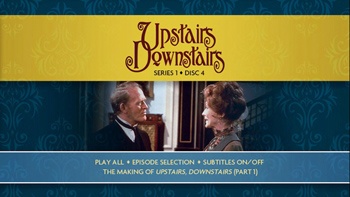 |
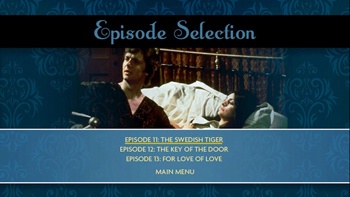 |
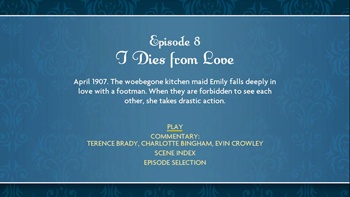 |
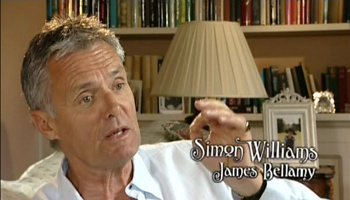 |
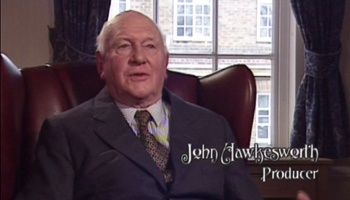 |
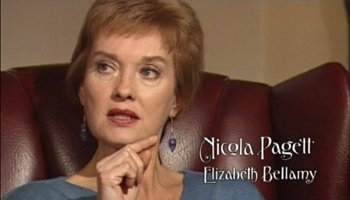 |
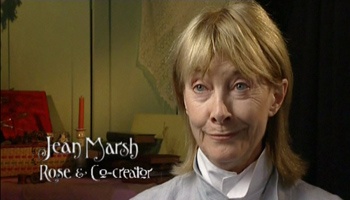 |
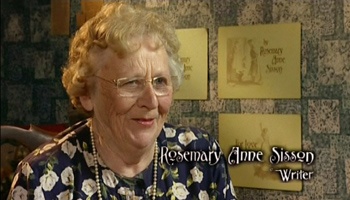 |
|
1) Acorn Media - Region 0 - NTSC - TOP2) A+E - NTSC - MIDDLE3) Network - Region 2- PAL BOTTOM
|
|
|
|
|
|
|
|
1) Acorn Media - Region 0 - NTSC - TOP2) A+E - NTSC - MIDDLE3) Network - Region 2- PAL BOTTOM
|
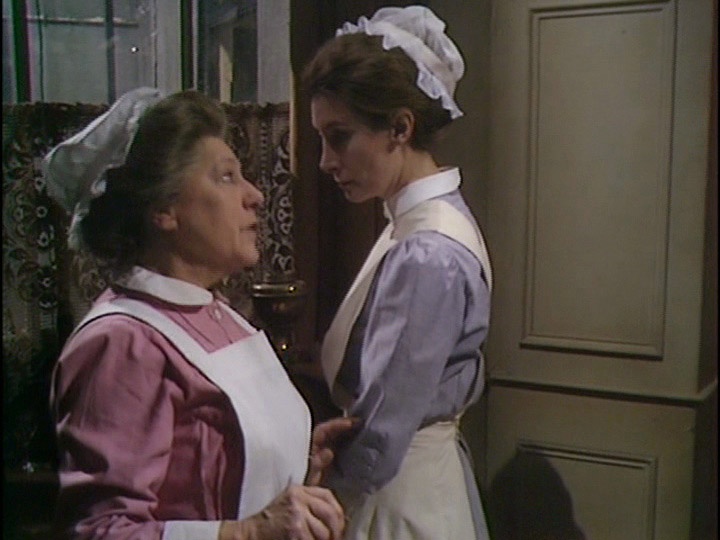 |
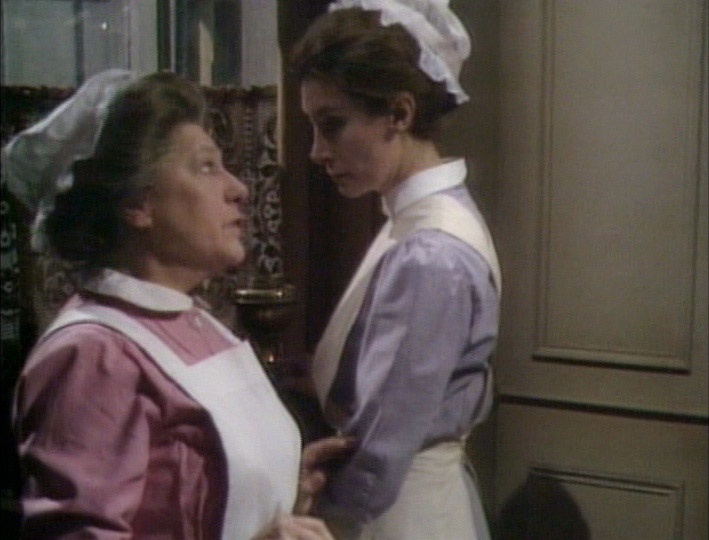 |
|
|
|
1) Acorn Media - Region 0 - NTSC - TOP2) A+E - NTSC - MIDDLE3) Network - Region 2- PAL BOTTOM
|
|
|
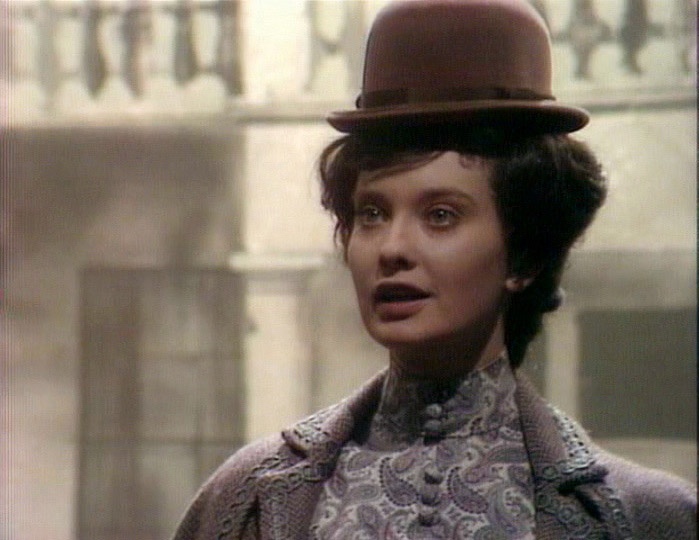 |
|
|
|
1) Acorn Media - Region 0 - NTSC - TOP2) A+E - NTSC - MIDDLE3) Network - Region 2 - PAL BOTTOM
|
|
|
|
|
|
|
|
1) Acorn Media - Region 0 - NTSC - TOP2) A+E - NTSC - MIDDLE3) Network - Region 2 - PAL BOTTOM
|
|
|
|
|
|
|
More Acorn Screen Captures
|
|
|
|
|
|
|
|
|
|
|
|
![]()
![]()
![]()
![]()
 Search DVDBeaver |
S E A R C H D V D B e a v e r |

